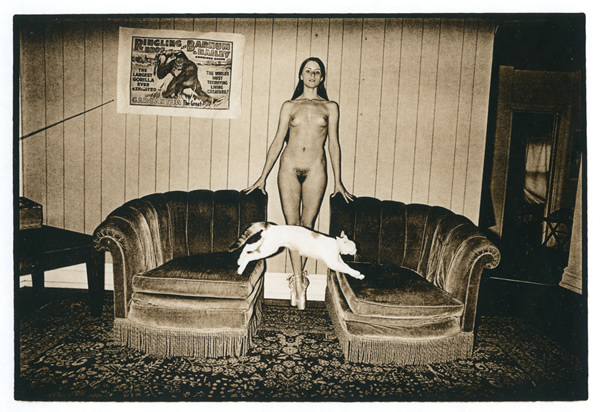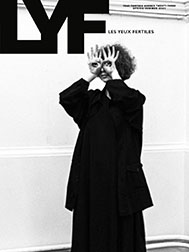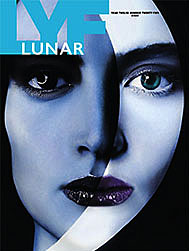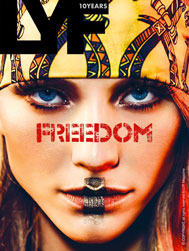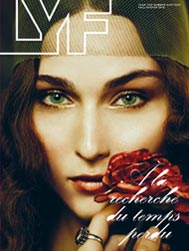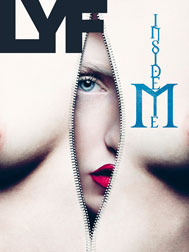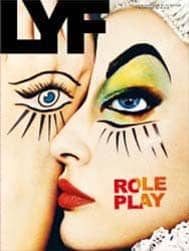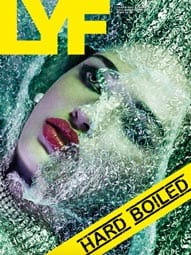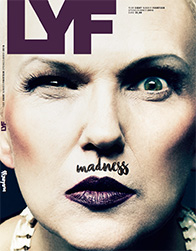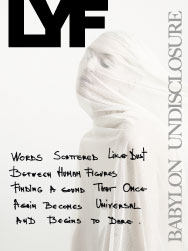Phil Borges
Phil Borges is an American documentary filmmaker and photographer, whose work is aimed towards social justice and preservation of different cultural heritages. For over twenty-five years, he has been passionately documenting the life of tribal populations all over the world using the method of the “environmental portrait”, to raise their problems and to spread their knowledge. His images vary from portraits of exiled Tibetan monks to many of the world’s embattled tribal and indigenous cultures. Motivated by a spiritual journey and a life mission, which are driving him to the remotest corners of the earth, Borges tries to give voice to extraordinary realities that otherwise could not be unveiled. Through interviews and portraiture, Borges examines his subjects’ valuable beliefs and stories and documents their tribulations with dignity. Through his exhibits and award-winning books, Phil attempts to create a relationship between the audience and his photographic subjects: “I want the viewer to see these people as individuals, to know their names and a bit of their history, not just to view them as an anonymous part of some remote ethnic or tribal group”. Multi-awarded for his humanitarian commitment, in 2008 he has collaborated with Amnesty International; his photographic collections have been translated into four languages and his works are being displayed in museum all over the world. With his gracious and elegant touch with the people he photographs – everyone from the nomads of the remote Himalayas to the Dalai Lama himself – Phil Borges brings attention to the oppression of this deeply spiritual culture, and to the aggressive occupation of their homeland by a more powerful nation state.
Photo courtesy of Galleria Paci contemporary (Brescia-Porto Cervo, Italy)
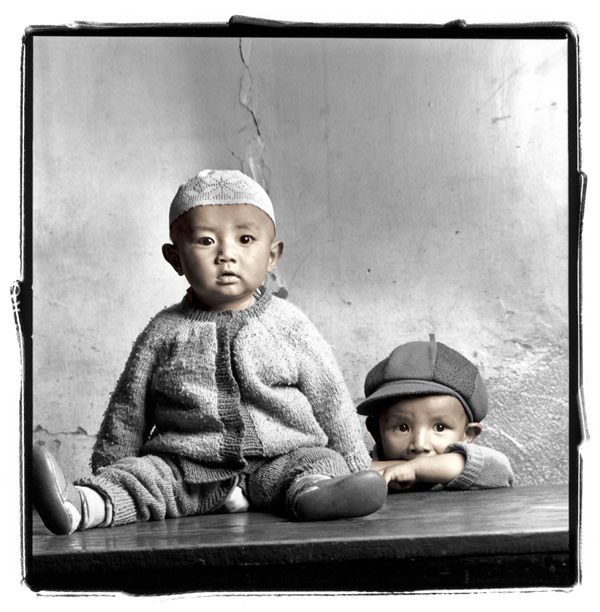
Ahida and Sonam, Lhasa, Tibet
Ahida and Sonam are Muslim children who live near their mosque in Lhasa, the capital city of Tibet. Sonam’s father indicated that the Muslims have peacefully lived alongside Tibetan Buddhists for centuries and that there are currently thousands of Muslims living in Tibet. He said their religious practices are strictly controlled by the Chinese Bureau of Religious Affairs.
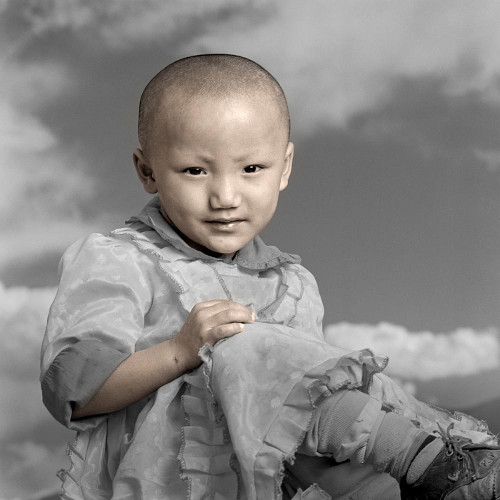
Samdi
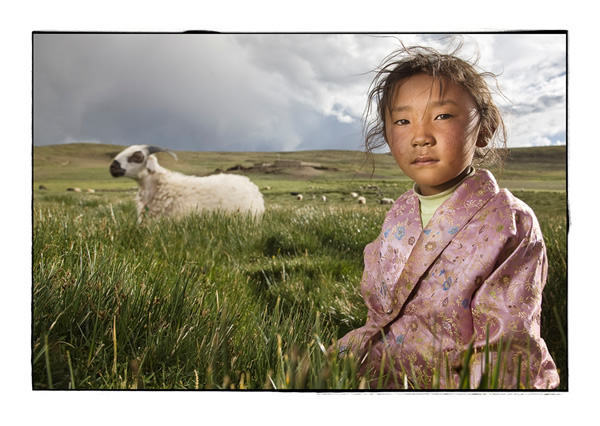
Trinley Dolkar, 7
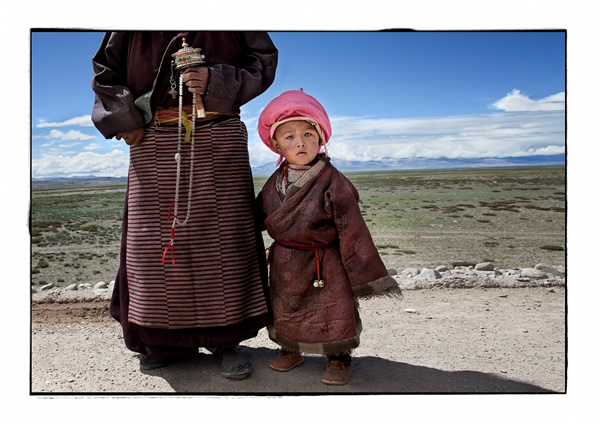
Yelong Droma
Mei Xian Qiu
Mei Xian Qiu is a Los Angeles based artist who was born in the town of Pekalongan, on the island of Java, Indonesia, Her family immigrated to the United States and she was moved back and forth several times between the two countries during her childhood. Then, as an adult, she has also been based in Europe, China, and Indonesia. The life of the artist has strongly influenced her artistic creations. It is exactly this sense of anxiety, caused by non-acceptance of the cultural difference, that leads Mei Xian Qui to use her art to spread a peaceful vision of freedom of thought. She doesn’t forget her past and in her series Let A Thousand Flowers
Bloom she reflects not only on a human level, but also on a political one, proposing the Greek concept of a global citizenship and of cosmopolitanism, criticizing individualism of the social current occidental world and finally affirming the idea of a bigger national politics. The pictures of the series show a deep political reflection and Mei decides to represent this romantic and melancholic cultural wish, imaging a peaceful and non-violent invasion of a group of Asiatic people, who are dressed in a military uniform, armed with petals only, leaving space to the reality of the globalization of the current multiethnic society. Nothing in Mei’s works is by chance: she demands that her models are not only students of Chinese culture, but also American citizens with Asiatic origin. It’s no coincidence also the choice of the dresses, indeed she turns to a study of Pechino, that is focused on the recreation of propaganda tools of the cultural revolution and she uses old uniforms that belonged to the American army and to the communist Chinese guards. This combination between a romantic vision of the culture and the statement of the reality, makes the photograph of Mei a powerful symbol of the current needs of our society.
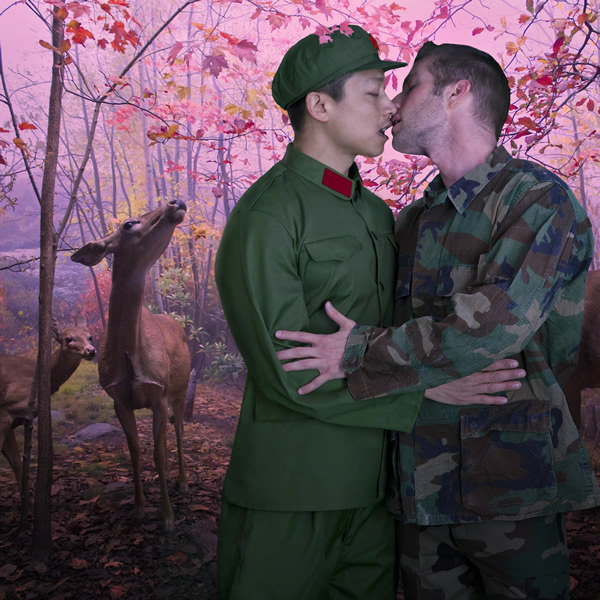
8990
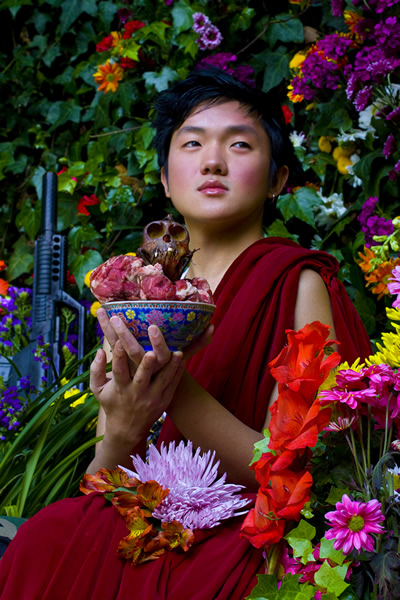
Monk
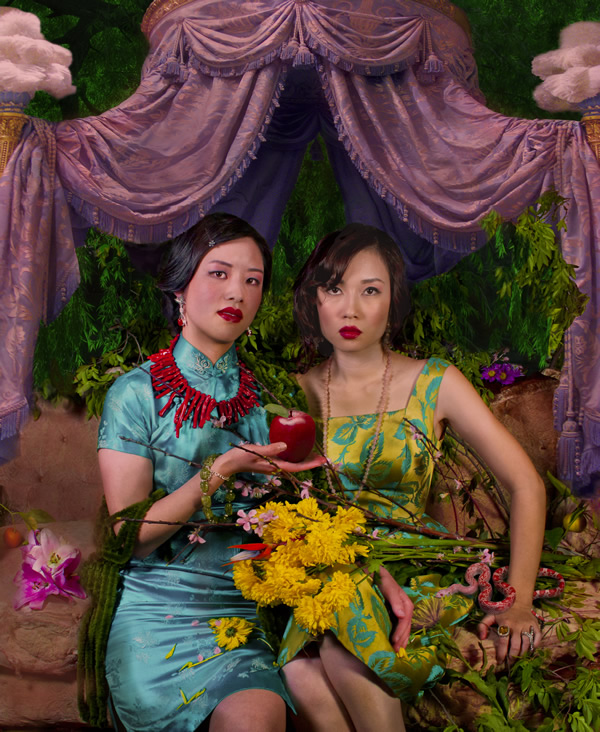
Temptation of Eve
Leslie Krims
As a kid, I made snapshots with my mother’s inexpensive Ansco camera. I’d take the negatives to a small, sour smelling camera shop a few blocks away to be developed and made into prints. Making any sort of picture appealed to me. To encourage this, my mother bought a small set of oils for meWhen I was a teenager my father lived in California, then moved to Las Vegas, where he lived for 19 years. In the 1950’s, I’d leave New York to spend Summers with my father in California, or Las Vegas. These trips helped me gain perspective. I began more clearly to see and appreciate the great variety of life and opinion America offered. Manhattan was not the center of the universe. Some of the pictures I’ve made are allegories-fractured fairy tales is another way to describe them. Most are best understood as images meant to fascinate. Into the 1970’s, many curators and gallery owners did not consider photography to be art. Photography was categorized as “old paper”- a term used in the antiques trade. My work, and that of a few others, helped establish a new direction. What we did displaced traditionalist, activist photography.My pictures have always been better received in Europe than the U.S., though they are sometimes misunderstood in Europe as criticizing America. A more accurate assessment is that some satirize the work of a misguided, elitist group of American intellectuals and artists. Working with nudes is nothing new, photographing one’s mother nude was. I literally began at home. Photographing my mother as my frst model insured a respectful relationship to my models. This has never varied. My most recent pictures attempt to show that “texts” can hammer most any picture’s meaning into a politically useful shape. If I do this adroitly, standard disingenuous, hypocritical, absurd, and irritating messages are deconstructed, their methods made transparent. It’s fun to do.
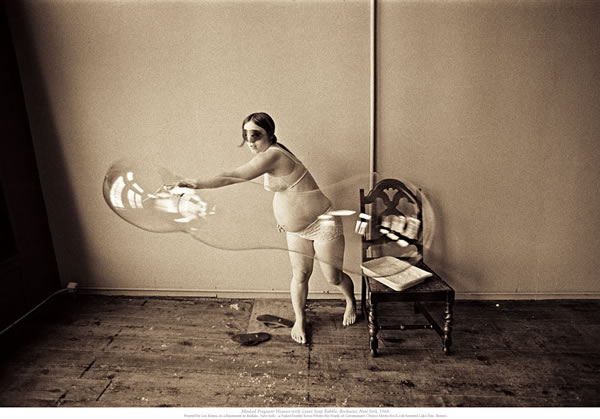
Pregnant Mask Bubble
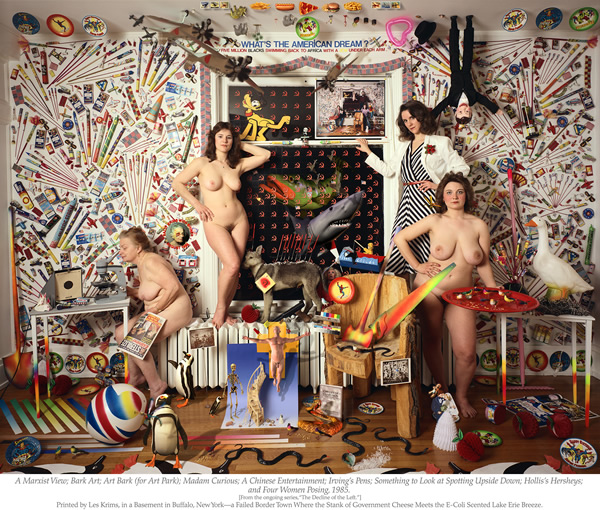
A Marx View
